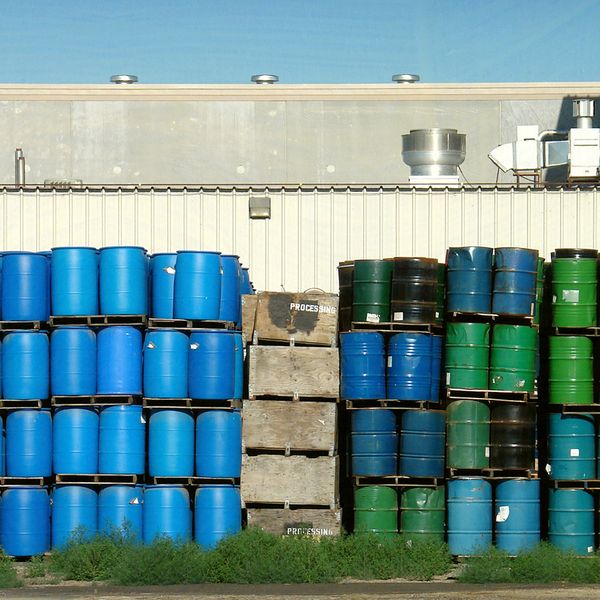Used hazardous waste drums posing BIG headaches, says EPA
Should EPA add more teeth to the hazardous waste regulations for “used containers,” like metal or plastic drums that once held hazardous waste? The regulations could impact the generation, transportation, management, and reconditioning of the containers. You have until November 22 to tell the agency what you think!
EPA has an “empty-container provision” where used hazardous waste containers must be empty before they can be sent to non-permitted facilities. Yet, these drum reconditioner facilities are actually getting containers that are not “empty” according to the Resource Conservation and Recovery Act (RCRA). In other words, they are not “RCRA-empty.”
| Learn more, by clicking our Empty Containers (RCRA-Empty) ezExplanation and our FAQ that asks, “Is my empty drum hazardous waste?” |
EPA’s Federal Register notice
EPA published a pre-proposal on August 11 asking for information as the agency considers a future rulemaking. On September 5, the agency issued another notice extending the comment period to November 22. Stakeholders include:
- Used drum generators,
- Drum reconditioning facilities,
- Communities near drum reconditioning facilities,
- Container transporters,
- Tanker car and railcar cleaning facilities,
- Chemical manufacturers,
- Scrap yards and landfills,
- Waste generators,
- Industrial facilities, and
- Environmental groups.
Through the pre-proposal, EPA is:
- Evaluating the generation, transportation, and management of used containers;
- Looking for information on state compliance assistance and technologies for drum handling or cleaning; and
- Trying to figure out if regulatory or non-regulatory actions could lessen the risks involved in the used container lifecycle.
EPA admits that the reconditioning of used containers is a vital part of the waste management industry. It reduces waste overall, but not without serious, unintended consequences, argues the agency.
What regulatory options is EPA considering?
If you send used drums or containers to a drum reconditioner, EPA refers to you as a “used drum generator.” For used drum generators, as well as transporters, the agency is considering:
- Reducing the one-inch regulatory limit for defining RCRA-empty containers;
- Requiring rinsing for all containers before they would be deemed RCRA-empty;
- Requiring empty drums to meet structural integrity requirements before shipment;
- Requiring used drum generators to ensure all waste has been removed from containers;
- Requiring used drum generators to track shipments of empty drums; and
- Requiring drum labeling or documentation of the hazard posed by drum residues.
The agency also suggests it could remove the empty-container provision. If that happens, it would impose full RCRA Subtitle C requirements on residues in drums. This change would be applied from the point the drums are generated to the point that they no longer contain any residue.
The pre-proposal goes on to suggest 13 regulatory actions for drum reconditioners and drum “end-of-life” management facilities like scrap yards and landfills. These actions cover things like waste analysis, inspections, inventories, and financial assurance. Permitting, pre-treatment, wastewater management, and contingency planning provisions are also possible.
What non-regulatory options is EPA considering?
In addition to potential regulatory changes, EPA is thinking about:
- Hiking compliance assistance and enforcement efforts; and
- Issuing voluntary standards, best practices, and standard operating procedures.
Pre-proposal mentions tanker car and railcar cleaning facilities
EPA recognizes that “transportation equipment cleaning facilities” (TECFs) have similar issues to drum reconditioners. The agency warns that actions stemming from the pre-proposal could also apply to these facilities. The agency is interested in comments on environmental problems with TECFs.
Key to remember
EPA is looking at regulatory and non-regulatory options to deal with used hazardous waste containers. The agency seeks comment by November 22.

















































